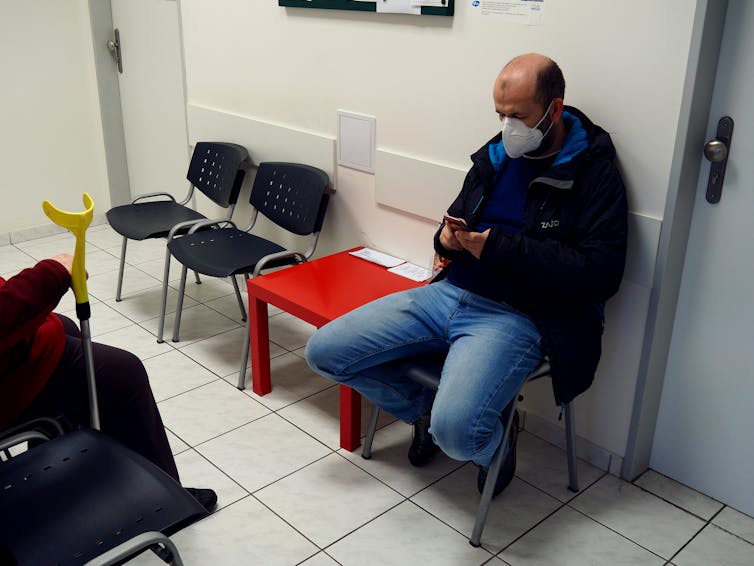Labor’s health package won’t ‘strengthen’ Medicare unless it includes these 3 things
By Anthony Scott of Melbourne University.
“Strengthening Medicare” is one of Labor’s key election platforms. On Saturday, one week from the election, the opposition finally outlined its commitment to prop up the ailing primary care system, with a A$970m funding package.
The promise of additional funding for primary care is welcome. More money is badly needed, but Labor’s plans have no detail on how this will improve health outcomes and equity of access.
In order to ignite the structural health care reform we so desperately need, Labor needs to focus on three key areas: GP numbers, free access to GPs and better access to specialists.
Remind me, what is primary care?
Primary care is a person’s first point of contact with the health system. This is usually in general practice, with GPs and practice nurses, and also includes some care provided in community health centres and Aboriginal community-controlled health services.
The current Liberal government published its Primary Care ten year plan in 2022 after a consultation period starting in 2019. It included technological improvements to boost quality, voluntary patient registration for the elderly (to sign up with a GP clinic which will support their long-term, chronic diseases), and support for integrated care, allowing people to move more easily from hospital to primary care, and other parts of the health system.
But as the Australian Medical Association (AMA) has highlighted throughout the campaign, this plan remains unfunded.
What does Labor’s plan include?
Labor’s plan promises new funding of A$950 million. The centrepiece is a new, so-called Strengthening Medicare Fund of A$750 million that aims to improve access to GPs – though it doesn’t say how. There is little detail on how this fund will be used.
The “how” will be decided by a so-called Strengthening Medicare Taskforce, chaired by the new health minister, plus many of the same people who designed the Liberals’ plan. It’s therefore unclear how different this would end up being from the Coalition’s plan.
Labor’s plan also includes A$25,000 or A$50,000 grants to improve practice infrastructure including IT, “upskilling” staff, and new equipment including infection control.
Direct subsidies to support the costs of running a practice is important, though by itself does not guarantee more patients can find a bulk billing GP. Nor does it guarantee the rising health care costs will slow down.
Three problems that need to be fixed
The taskforce will take time to deliberate. But here are some ideas to begin with.
1) Address the GP shortage
There remains a chronic shortage of GPs, with many GP training places remaining unfilled and with a much higher growth in the number of specialists compared to GPs.
Our research has shown three things can persuade junior doctors to choose general practice as a career: money, more procedural work (such as helping deliver babies or removing skin lesions) and more opportunities for research and academic work.
There are no policies in any parties’ plans that address these.
Read more: Poor and elderly Australians let down by ailing primary health system
More money needs to be used carefully and needs to reduce the large gap between GPs’ and specialists’ incomes if more junior doctors are to be attracted to this specialty.
Procedural work for GPs exists in rural areas but is more tricky in cities, but many city GPs have specific special interests in undertaking procedures that should be better supported.
Primary care research and basic data collection remains a gaping hole in need of additional funding.
2) Increase free access to GPs
The key issue for many patients is accessing free GP services, with many people avoiding GP visits because they have to pay.
Again, nothing in either party’s plan will directly reduce out-of-pocket costs.
The solution requires new, innovative funding models for primary care, especially in low socioeconomic and rural areas. This could include federal government funding to expand community health centres, which are run by states.
There has never been a specific policy focus in Medicare for low socioeconomic areas.

3) Improve access to specialists
Labor’s plans are about strengthening Medicare, yet the largest part of spending on Medicare services is for services provided by specialists. Of the total spending on Medicare benefits of A$27.5 billion in 2020-21, 32% (A$8.8 billion) was spent on GPs, while 54% (A$14.2 billion) was spent on other specialists.
However, the Labor and Coalition plans completely ignore the continuing problems of access to specialists.
Rich people have better access to specialists, including for child health services. You either wait up to a year for a public hospital appointment or pay sometimes exorbitant out-of-pocket costs. This contributes to significant inequalities in health.
What next for Medicare?
It’s easy to point out what’s wrong with the Australian health system, and much harder to think of solutions, especially where significant structural change is actively discouraged by some in the sector.
We need primary care that is guaranteed to be free and accessible for a significant part of the population in the bottom half of the income distribution.
More money is good only if it can address these issues to properly strengthen Medicare and primary care.
This article is republished from The Conversation under a Creative Commons license. Read the original article.

